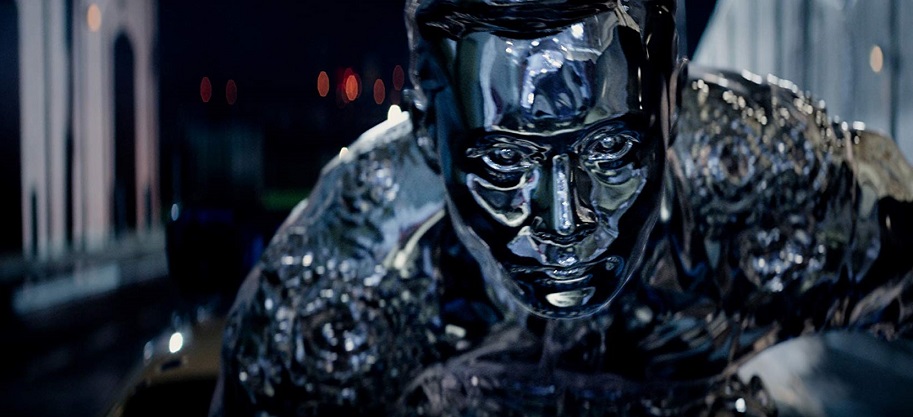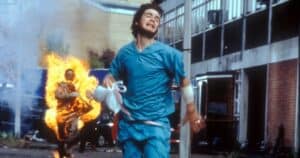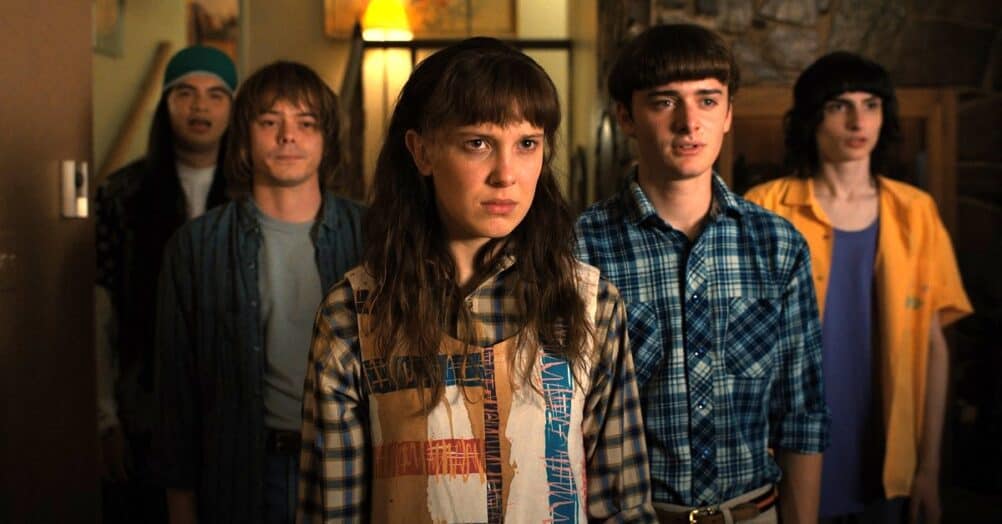Last Updated on July 30, 2021

THE BLACK SHEEP is an ongoing column featuring different takes on films that either the writer HATED, but that the majority of film fans LOVED, or that the writer LOVED, but that most others LOATH. We’re hoping this column will promote constructive and geek fueled discussion. Dig in!

TERMINATOR GENYSIS (2015)
DIRECTED BY ALAN TAYLOR
Now that the explosions are over and the dust has settled, straight up, how do we feel about TERMINATOR: DARK FATE? Was it everything you hoped and wanted it to be? Or, even with the return of James Cameron’s blessing, did the film fall short of your expectations? One thing we know for sure, having cost nearly $200,000, is that DARK FATE has yet to recoup its budget at the international box-office, although the film can wear the dubious honor of being the #1 domestic release of the weekend with $29 million in tickets sold. But one more time: was the movie everything we’d anticipated given the return of Sarah Connor?
It’s almost impossible, isn’t it? No matter how well made or how good the intentions are, it seems fervent fans will never quite accept the TERMINATOR flicks with as much ardor as the trailblazing first two. Case in point is the last iteration, TERMINATOR GENYSIS, which not only marked the exhilarating return of Arnie The Shchwarz after a 12-year absence but diegetically, boldly took the storyline in a cool new time-bending, LOOPER-like direction of circularity in a way fans and critics simply did not appreciate. We wonder why GENYSIS was summarily dismissed upon release and why it continues to remain a F*cking Black Sheep below!

The first thing we can use to prove GENYSIS is a F*cking Black Sheep is the box-office returns. While the movie banked all kinds of dough in China, GENYSIS is the first film in the illustrious TERMINATOR franchise to fail to earn $100 million at the domestic box-office. Couple this stark reality with the embarrassingly paltry 38/100 critical Metascore and unfortunately neutered PG-13 action (remember, the first three flicks are all Rated-R), and it’s easy to conclude that people simply did not respond to GENYSIS in the manner producer’s had intended. The proposed trilogy that GENISYS was to serve as the first leg was immediately scrapped due to the poor reception. But we urge y’all to take another peek at the picture, as it is far better than its beleaguered reputation suggests. A great film? Perhaps not? But a film unfairly judged by the superiority of its predecessors? Yeah, kinda!
While I can only defend so much the decision to hire, as well as the subsequent directorial acumen of, longtime TV director Alan Taylor (Game of Thrones), I want to start with the meritorious screenplay of the movie. Written by genre vets Patrick Lussier (MY BLOODY VALENTINE) and Laeta Kalogridis (SHUTTER ISLAND) – who turned down the film thrice due to their misgivings over RISE OF THE MACHINES and TERMINATOR SALVATION essentially ignoring events from the first two films – the plot of GENYSIS goes in bold new directions fans didn’t seem ready for: altered timelines! Crediting the second-half of BACK TO THE FUTURE II as inspiration, the trippy and self-reflexive fish-out-of-water riff explores time travel in ways the franchise has only peripherally flirted with.

Set in 2029, Skynet dispatches a T-800 back to 1984 to murder John Connor’s mother, Sarah. Kyle Reese volunteers to go back in time to protect Sarah, at which point we finally see the hardware of the time machine apparatus, something we’ve never seen in the franchise before. When Kyle arrives in 1984 L.A., he’s abducted by a T-1000 Terminator until Sarah (Emilia Clarke) and Pops aka The Guardian (Schwarz) – a newer and nicer version of the T-800 – dissolves the T-1000 in acid and temporarily saves Reese from harm. Following a brief stop in 1997, Reese and Connor make their way to 2017 San Francisco, where they intend to destroy Skynet once and for all. However, known in its nascent stage as Genysis, Kyle and Sarah must race to thwart the global operating system.
Along the way, formidable new threats arrive in the form of the T-3000 model (which thrillingly disguises itself as John at one point) and T-5000 model, which is the physical personification of the Skynet software. The plot does tend to get a bit convoluted from here on out, with the story jumping back and forth through time, but the wide driveway to the film's visceral finale is paved pretty smoothly. And again, the finale does something the entire franchise avoided heretofore, which is allowing the OG T-800 to survive rather than become murdered or succumb to self-sacrifice. But hey, what do you know, you take a chance and people not only disavow the risk, they clamor for not giving you exactly what the other films did ad nauseam. Such is the game!

But even aside from the original avenues that the diegesis wandered into, certain spectacles in GENYSIS cannot be denied. The marvelous recreation of 1984 Los Angeles, when the T-800 faces off with the punks at Griffith Observatory is downright awe-inspiring. Bodybuilder Brett Azar, who grew up idolizing Arnold, was cast as a body-double in the scene after he gave an identical line-reading. Arnold’s face was then digitally transposed over Azar’s face in postproduction. The scene is an uncanny homage to the original while altogether new, as Pops shows up and has a few words before doing intense battle with a younger mirror-image of himself. This scene is genuinely enthralling in the way it calls back and pushes forward at the same time.
Another scene that works well in GENYSIS is the acid-melt-job of newfangled T-1000 (Byung-Hun Lee), which showcases another area that marks a franchise first: the anamorphic digitization! Indeed, GENYSIS is the first film in the series to be shot digitally as well as use anamorphic lenses. The eye-bugging tech is on full display when, after Reese is taken by the T-1000, Sarah and Pops trick the metal-faced bastard into wandering through a waterfall of steel-melting acid. How the robot buckles, folds, liquefies, bubbles up and spills over in agony is a pretty gnarly reminder of how far the franchise has come technologically.

Speaking of the advanced tech, one needs to look no further than the visual dazzle of the fisticuff-finale to drive the point home. When Pops must square off with John Connor to quell Genysis from proliferating, we’re given a satisfying spectacle that organically ties the new threads in the series – time travel, time machine, digital tech, new characters, etc. – together in one last showdown. As the two duke it out in front of the glowing time machine, Pops gets reciprocated aide from his two protectorates, Kyle and Sarah. While I think a more effective piece of music could’ve been used, the GENYSIS finale feels germane to the new inroads the movie carves, as well as intrinsically linked to the larger mythos of the franchise as a whole.
The bottom line is this: with such a mega-franchise as THE TERMINATOR, fans tend to want to see more of the same, not necessarily risk the discomfort of digesting something new. Props are in line for Lussier and Kalogridis, who, at the very least, made a conscious effort to take the series into fresh and exciting new areas with their screenplay. That the audience didn’t respond in a way the movie rightly deserves – which is by no means a masterpiece, but at least a solid franchise entry – says more about us than it does the movie itself. Check it out again, TERMINATOR GENYSIS is not only a F*cking Black Sheep, but it’s also arguably the most original TERMINATOR flick since JUDGMENT DAY!




















Follow the JOBLO MOVIE NETWORK
Follow us on YOUTUBE
Follow ARROW IN THE HEAD
Follow AITH on YOUTUBE